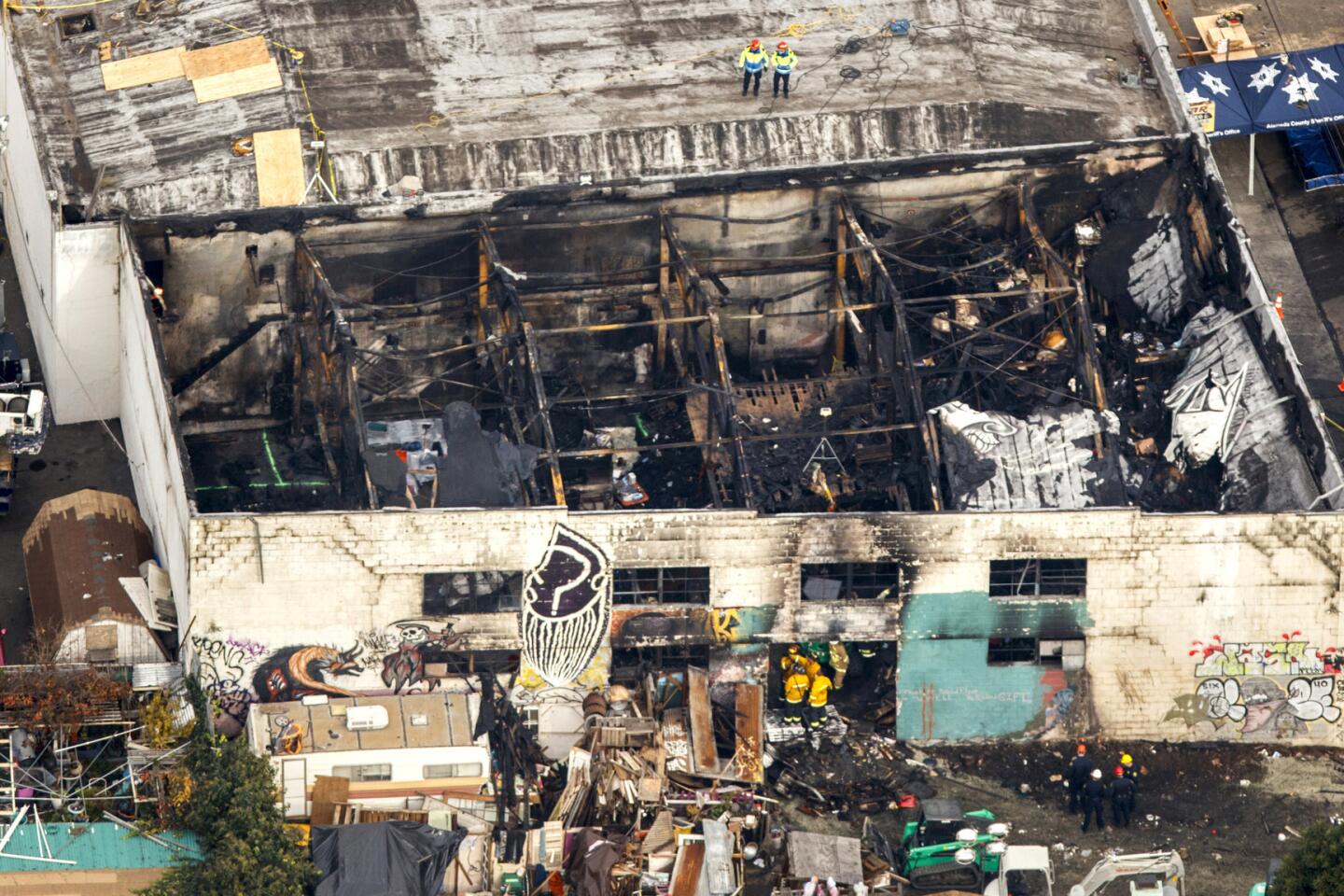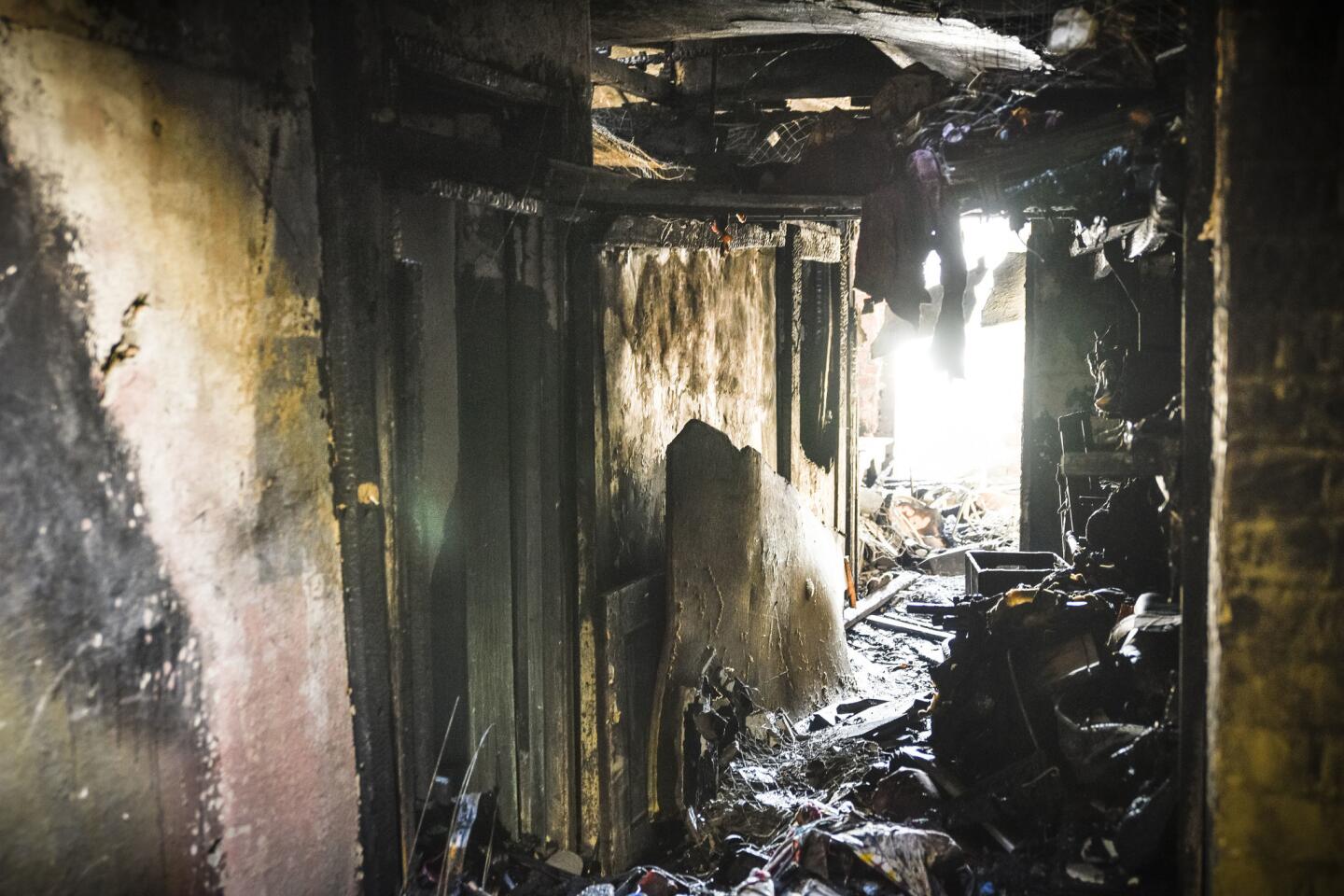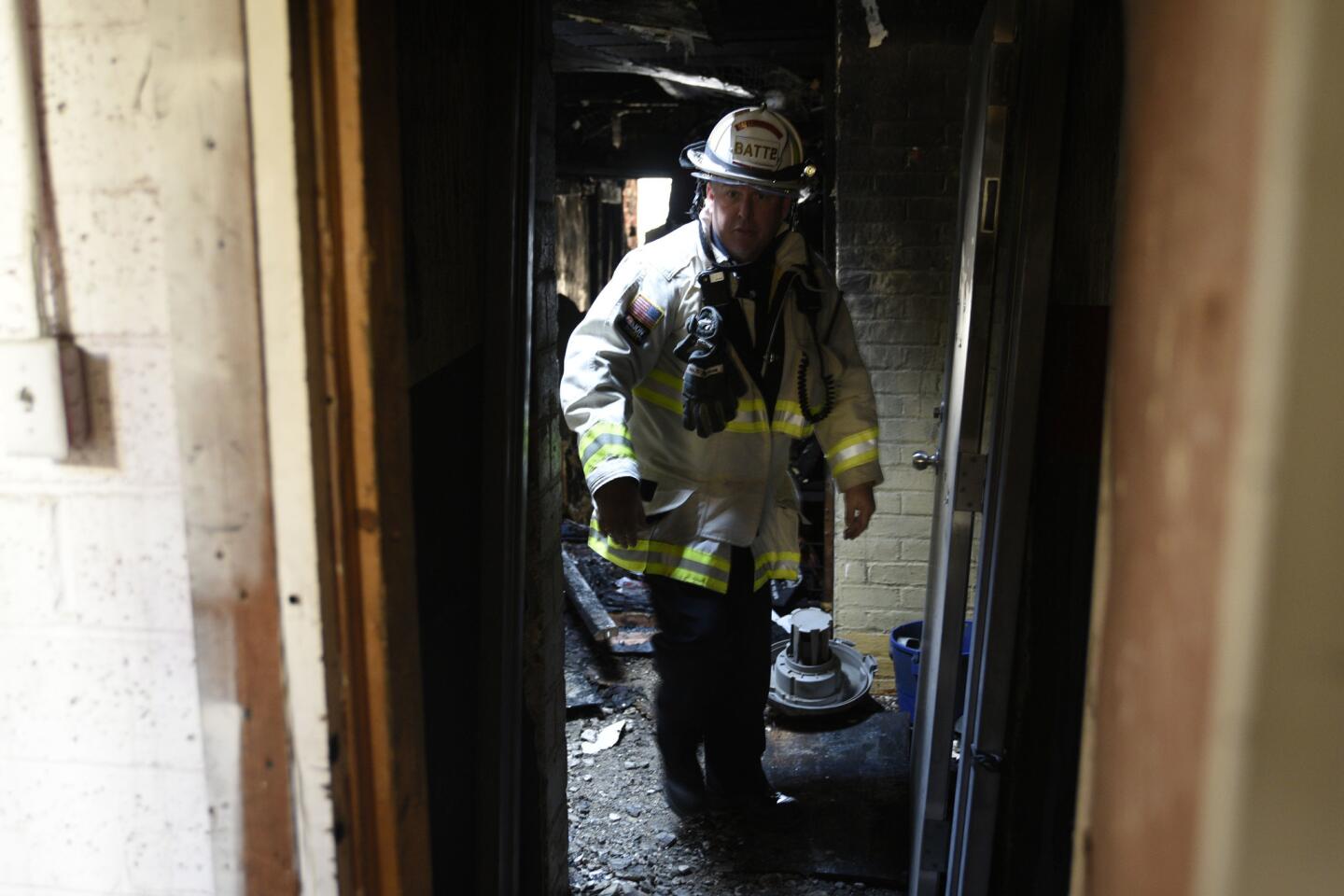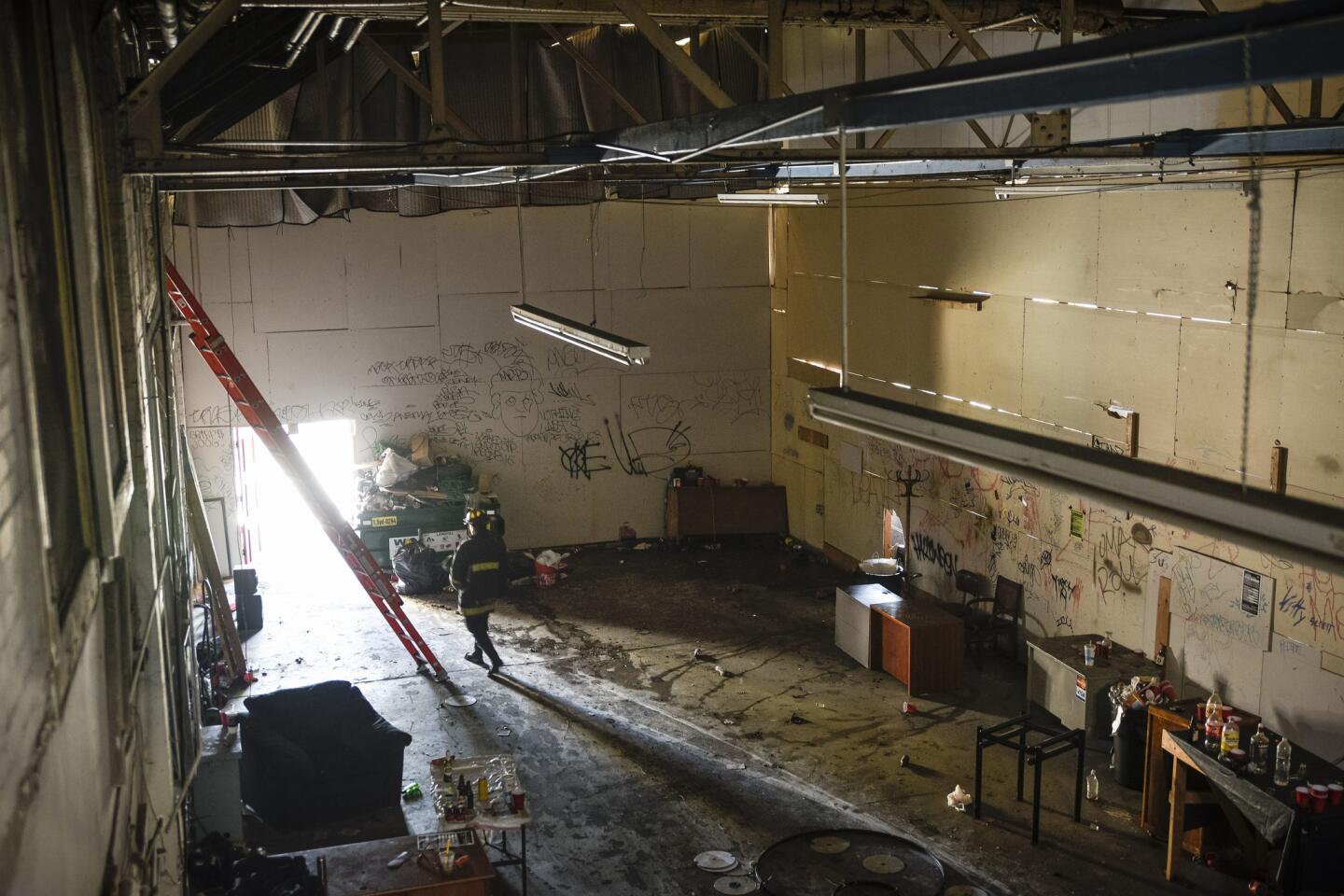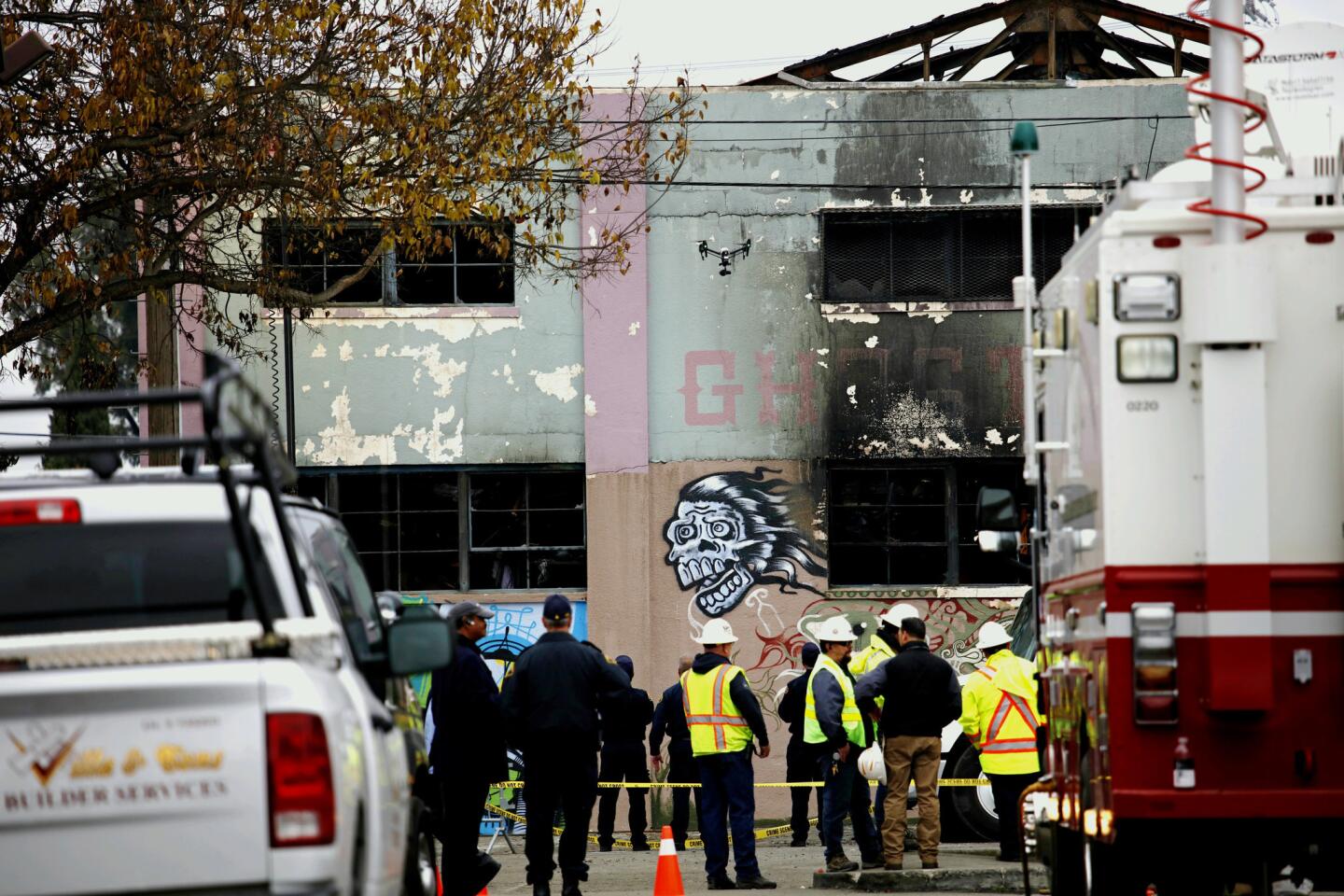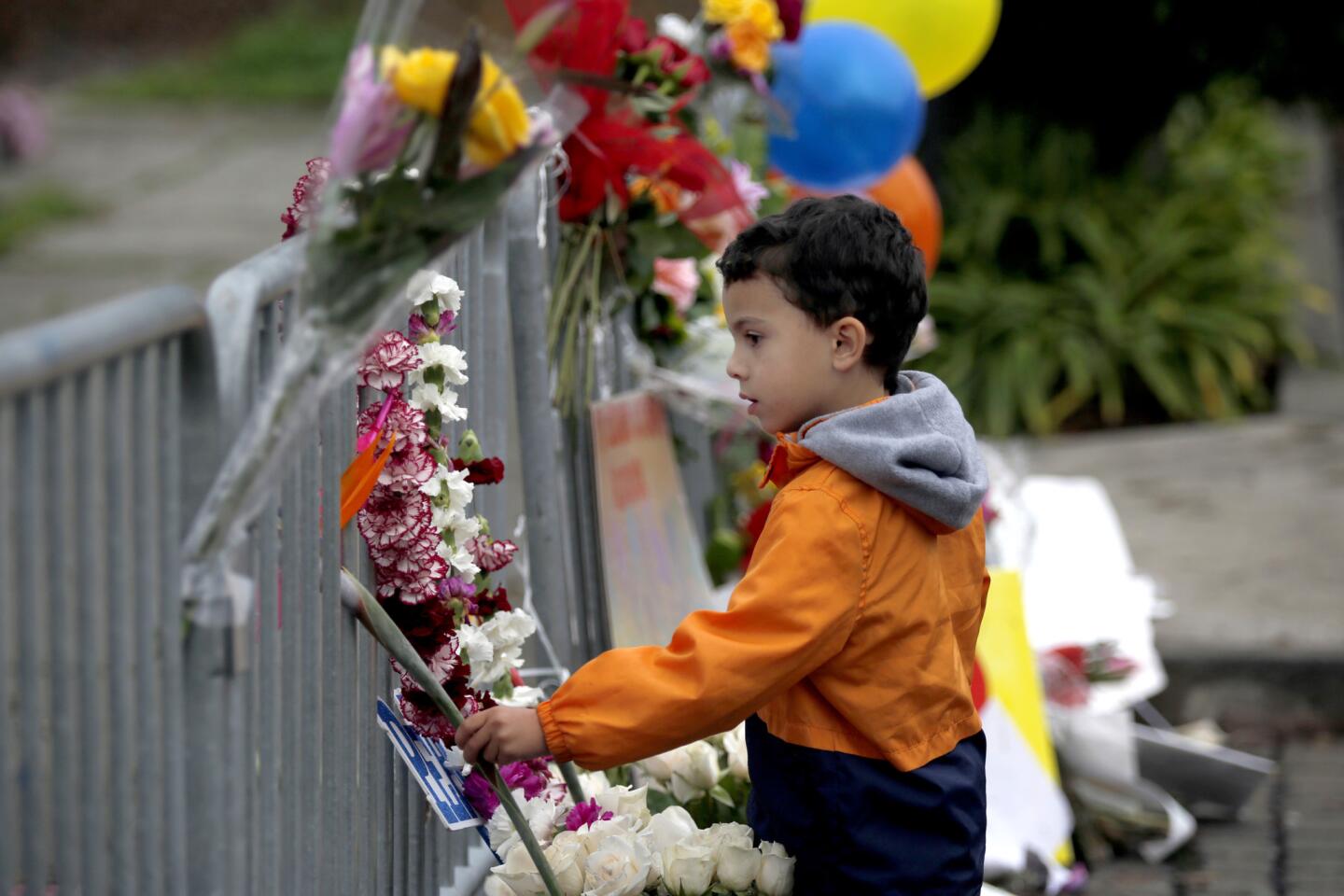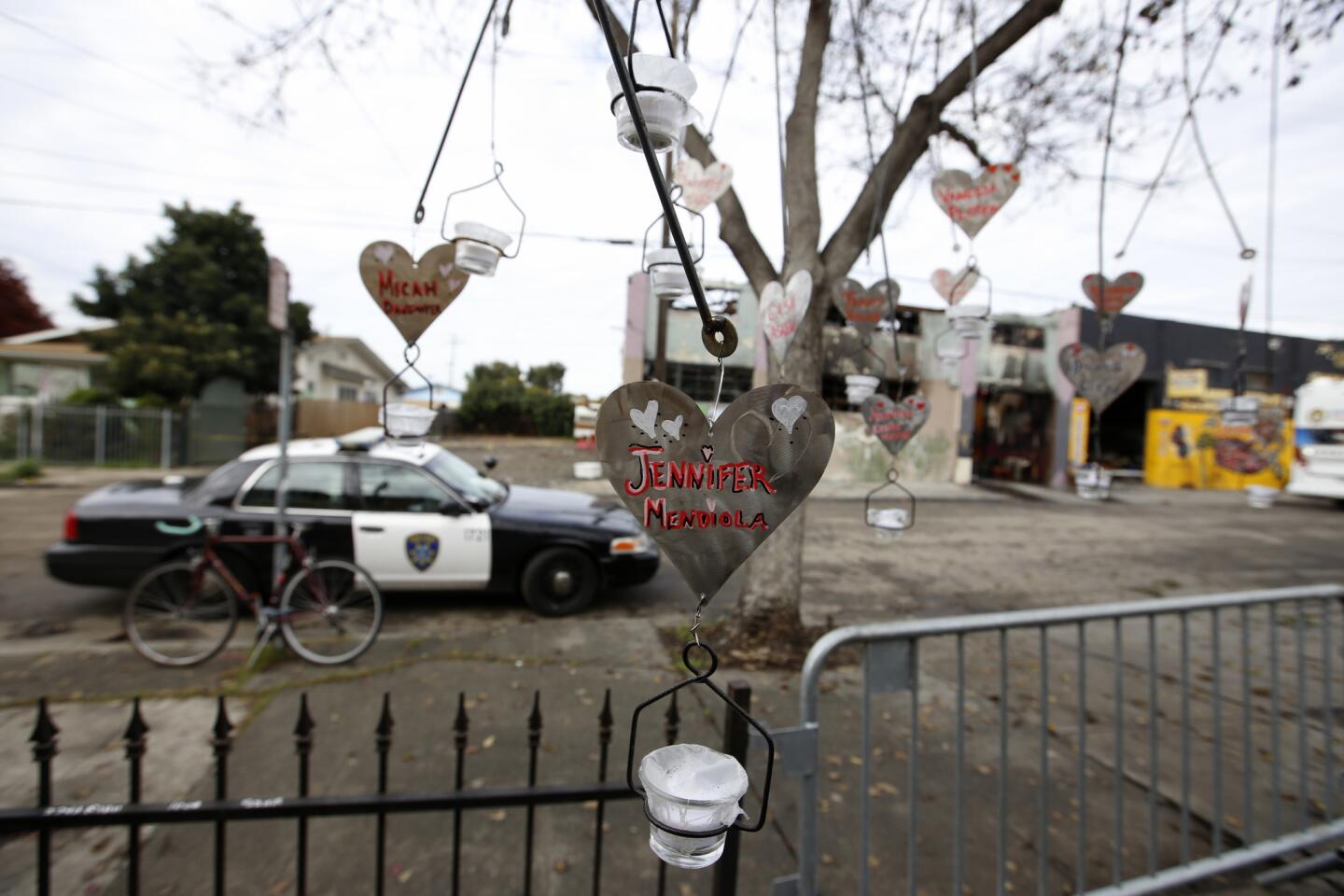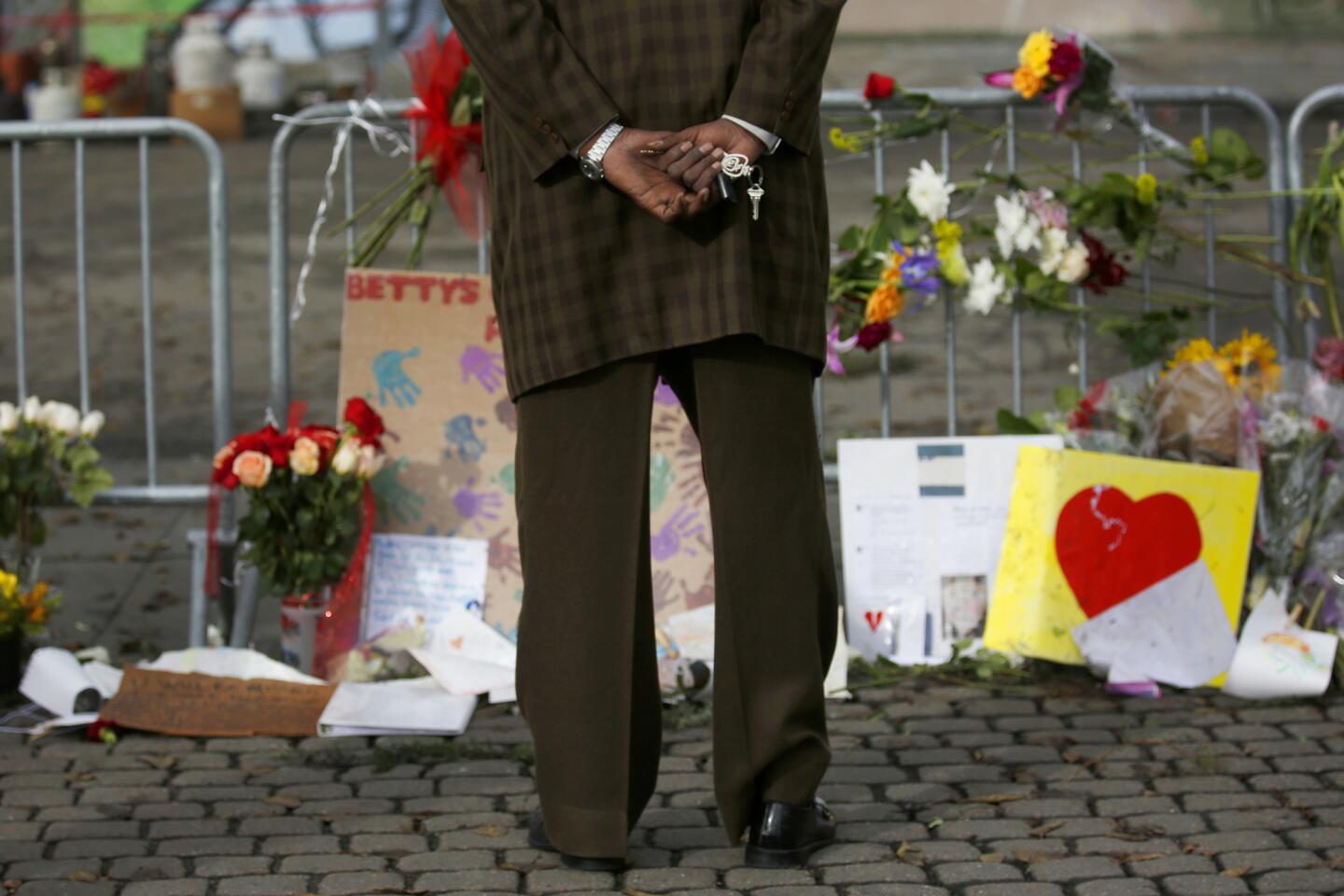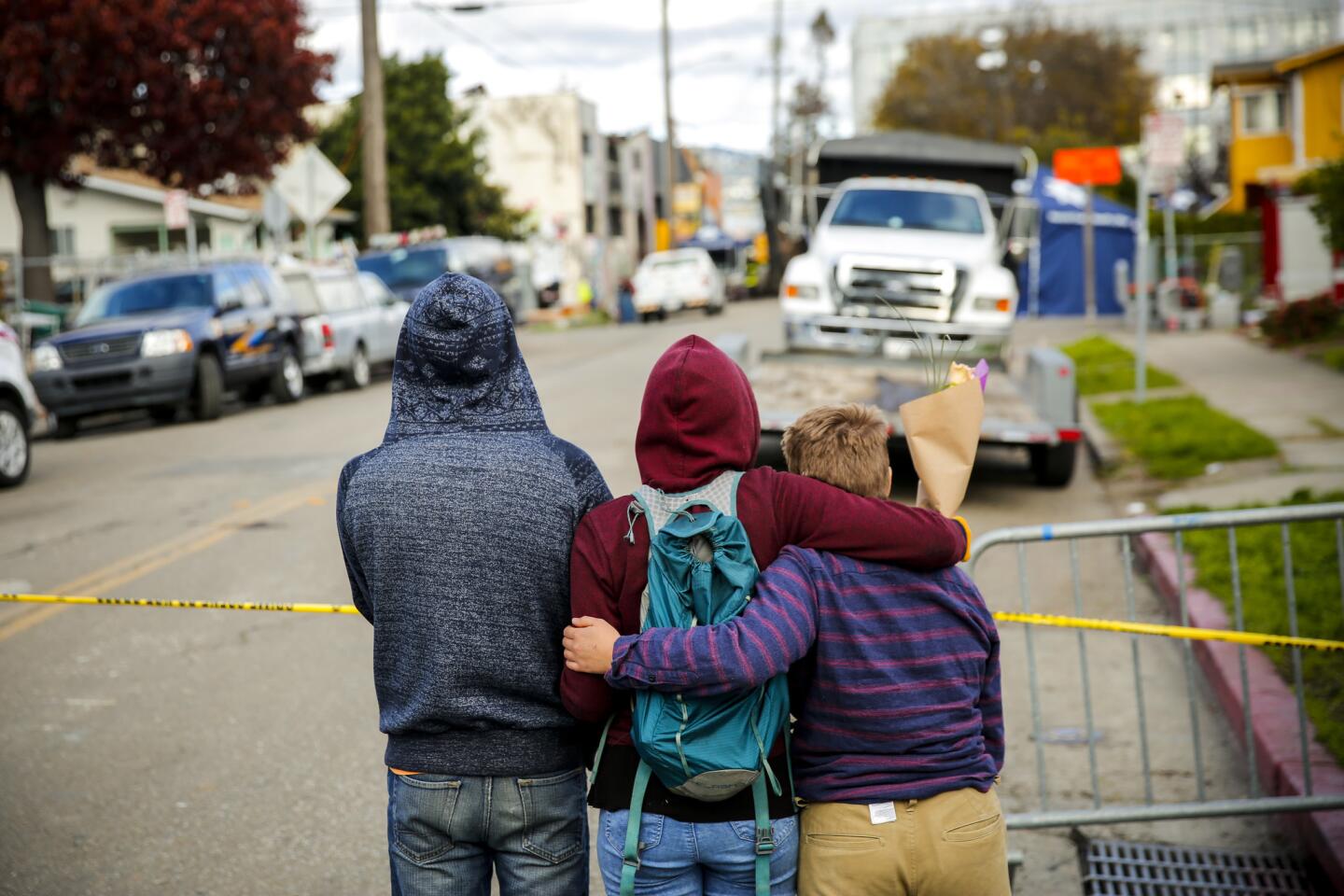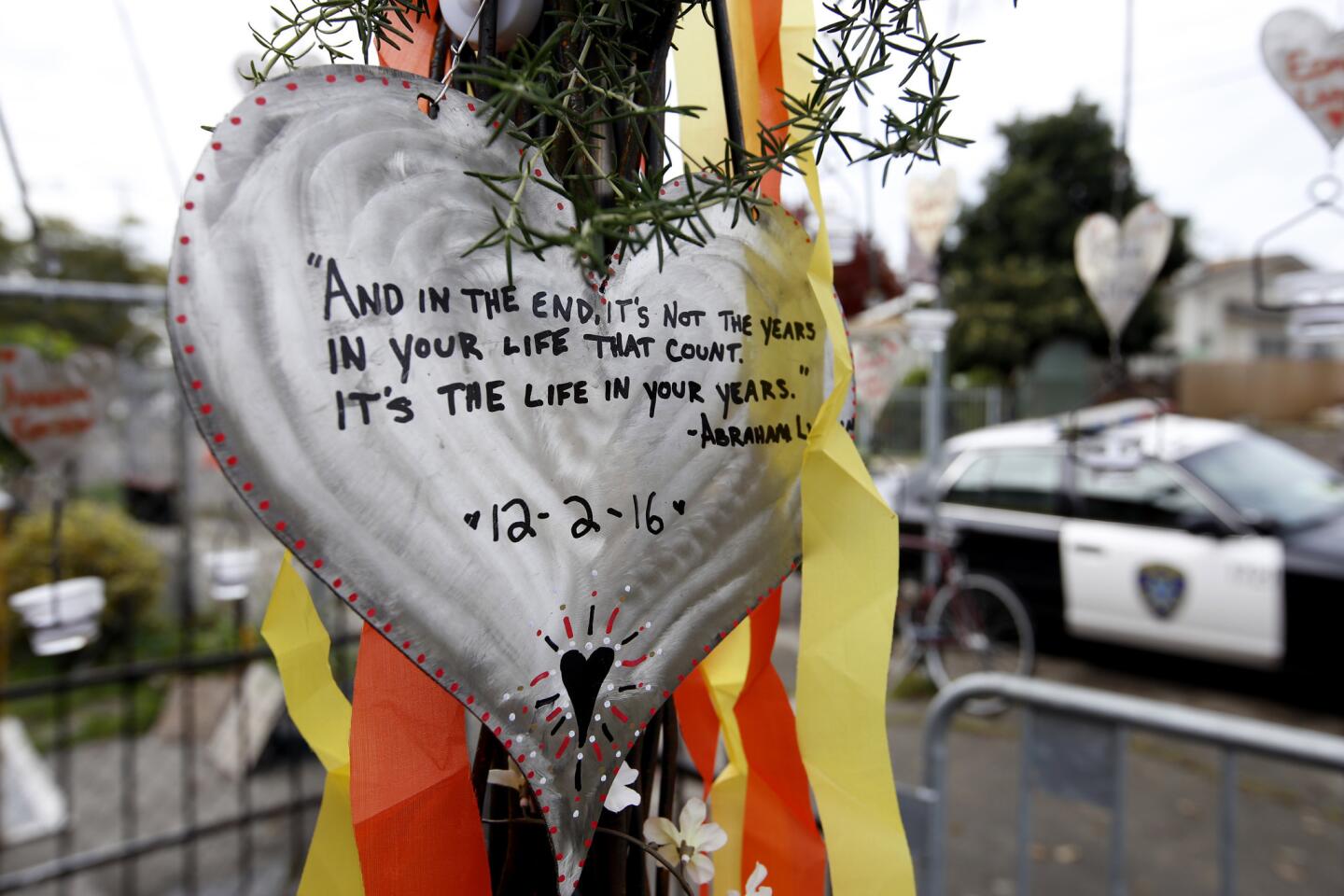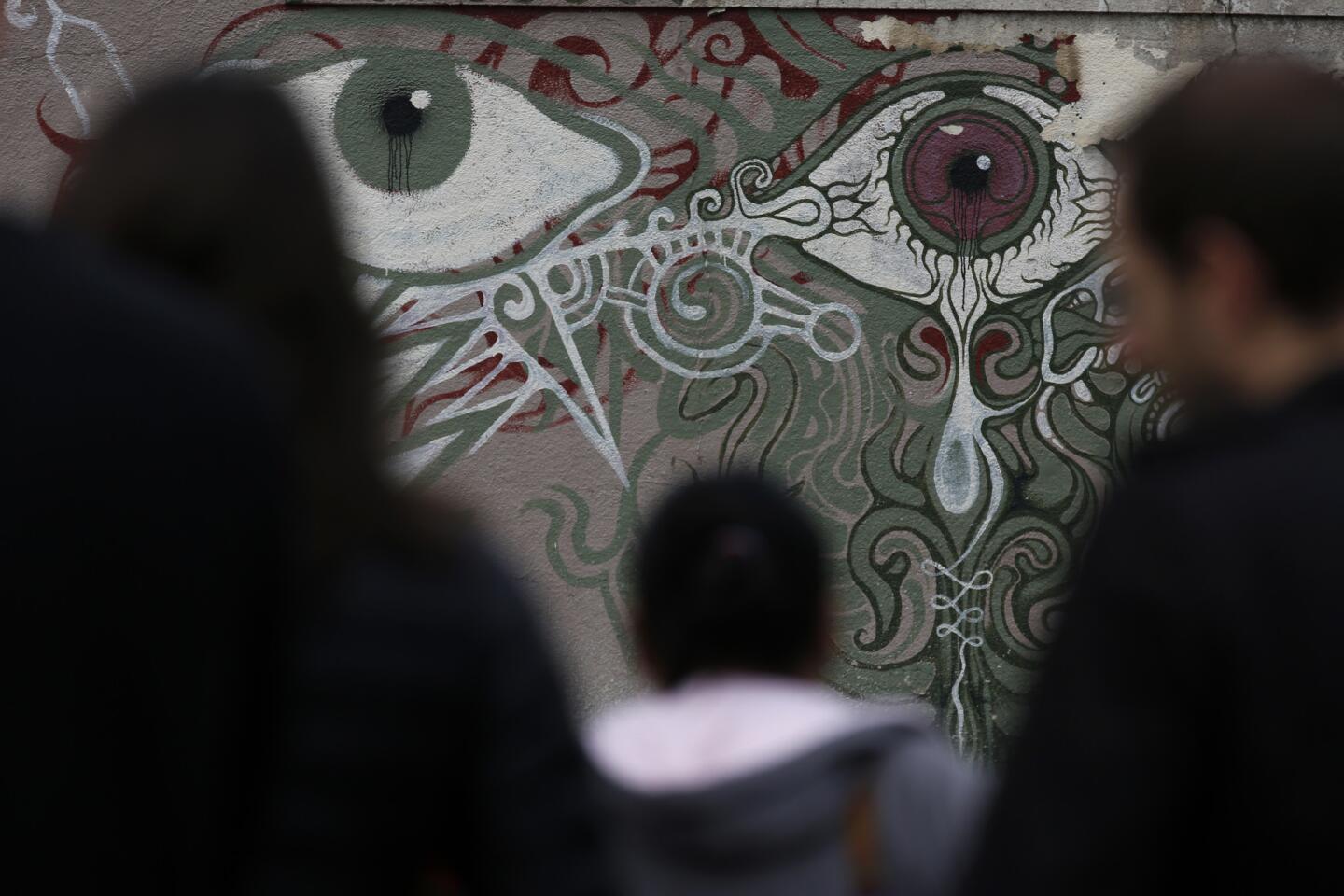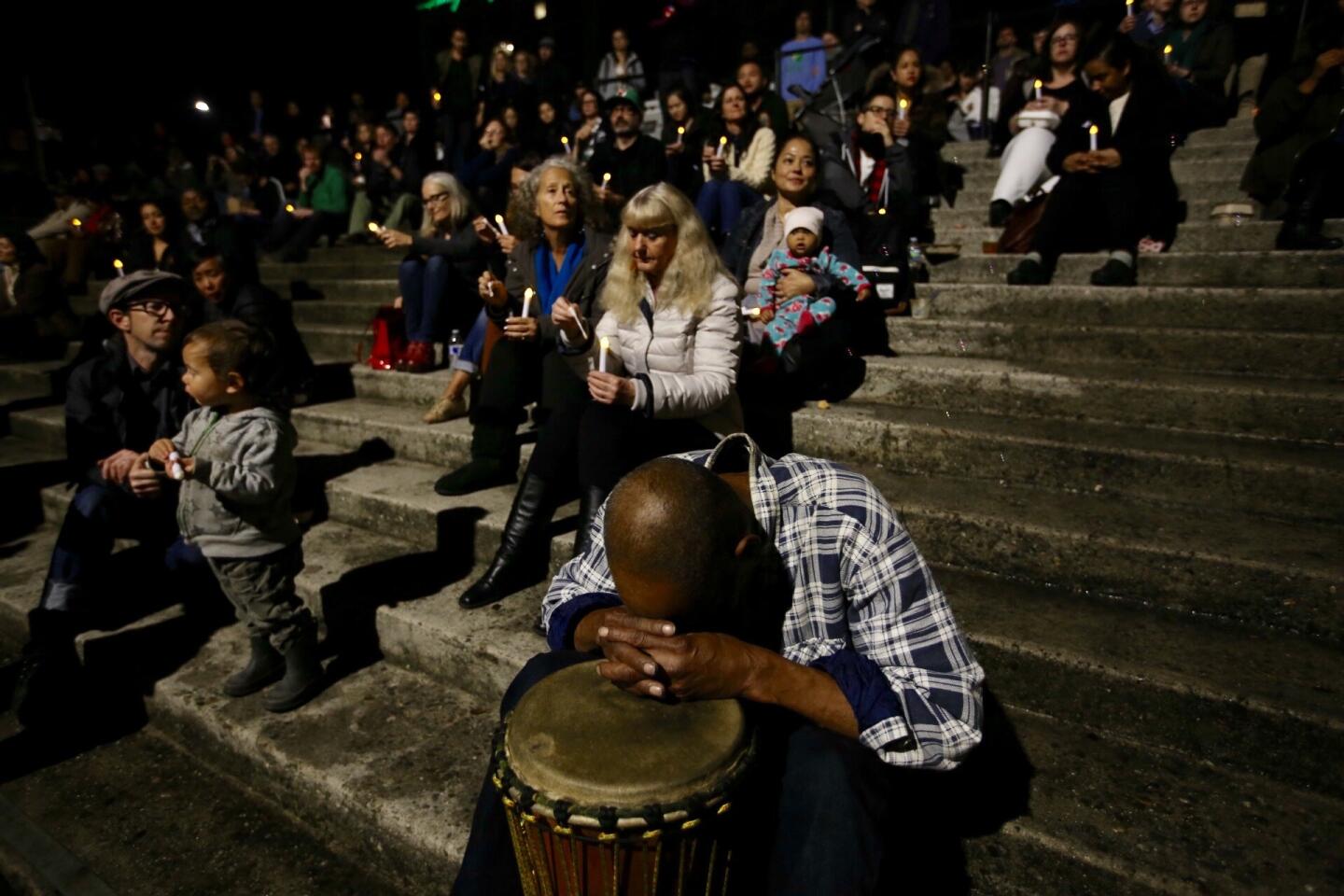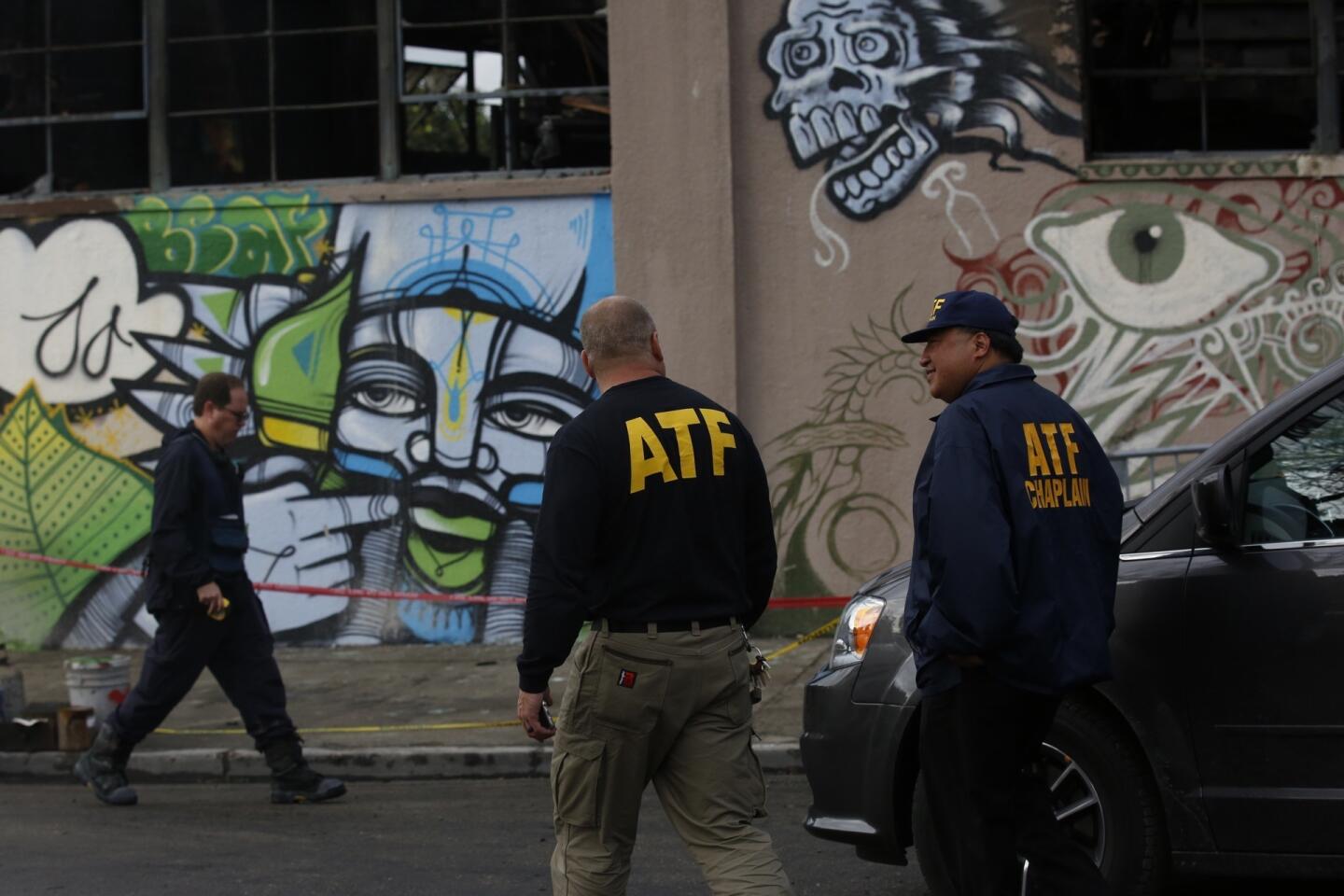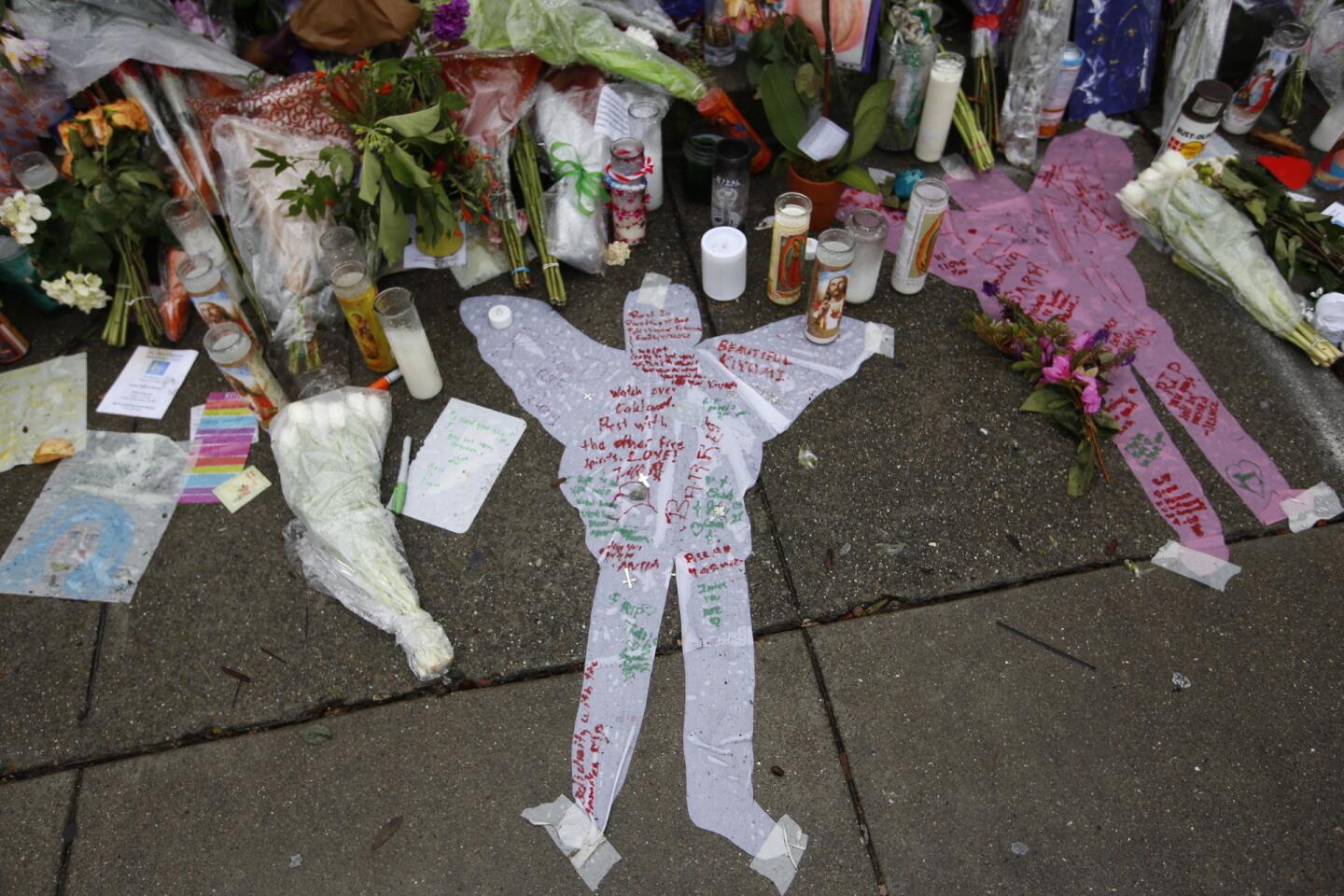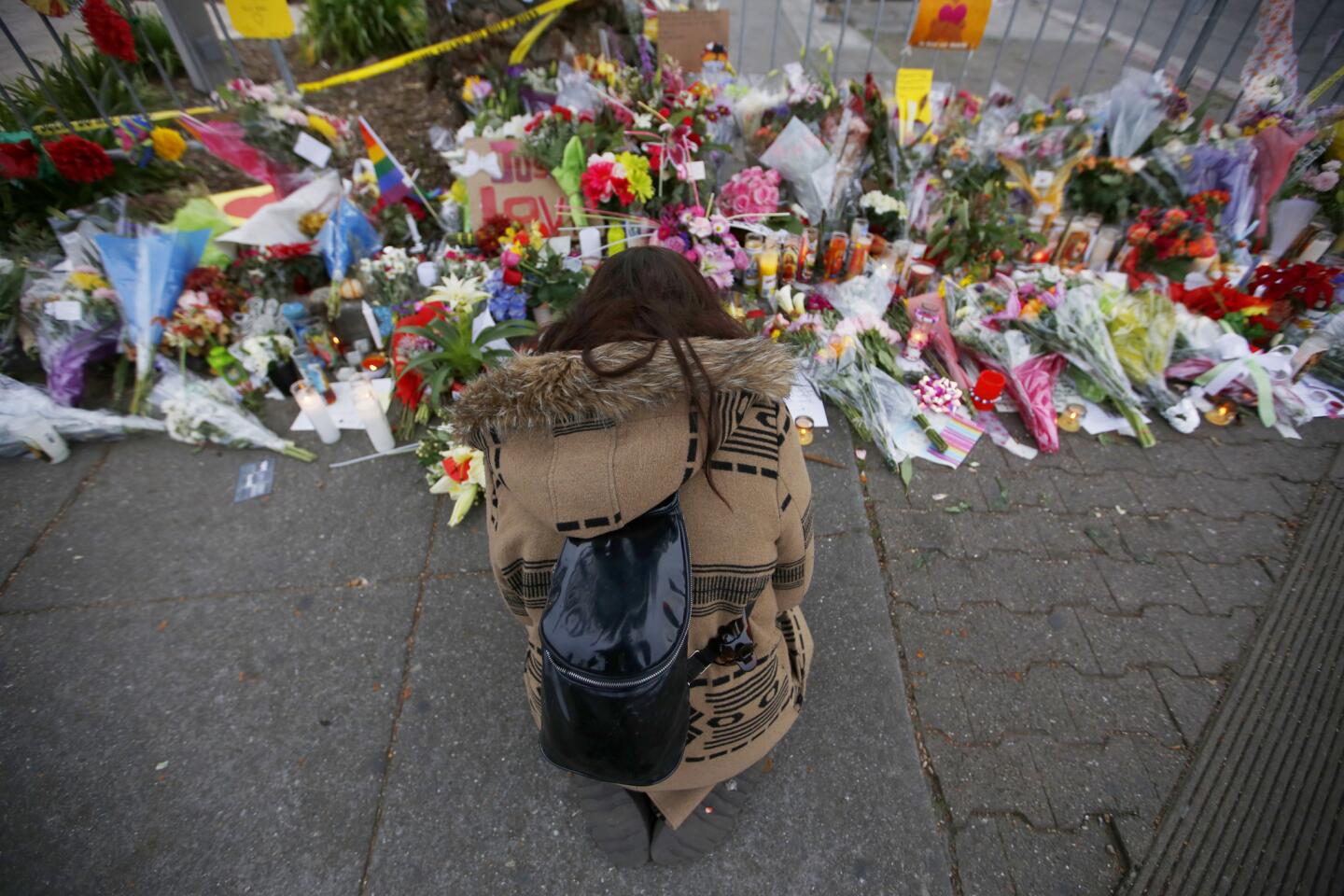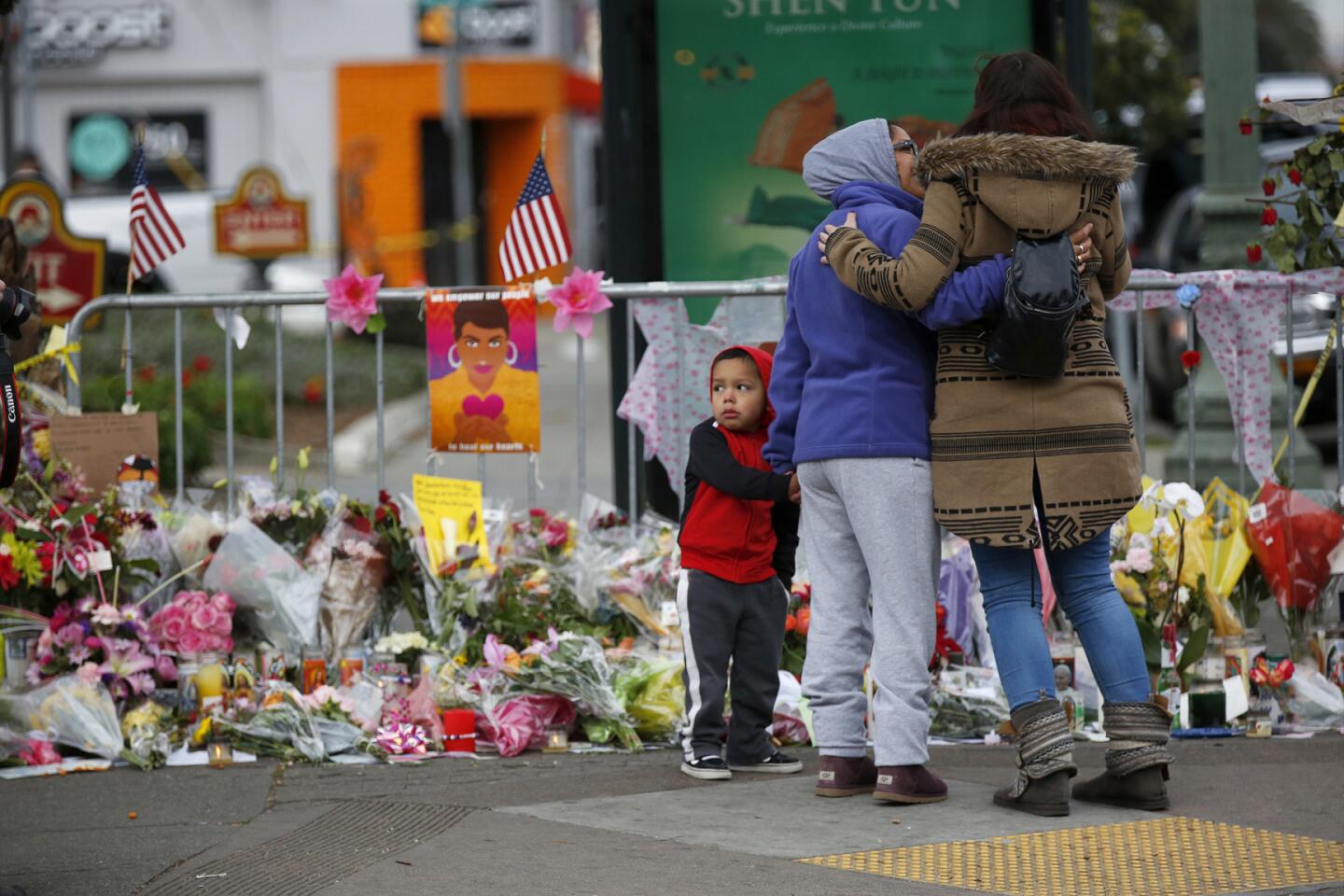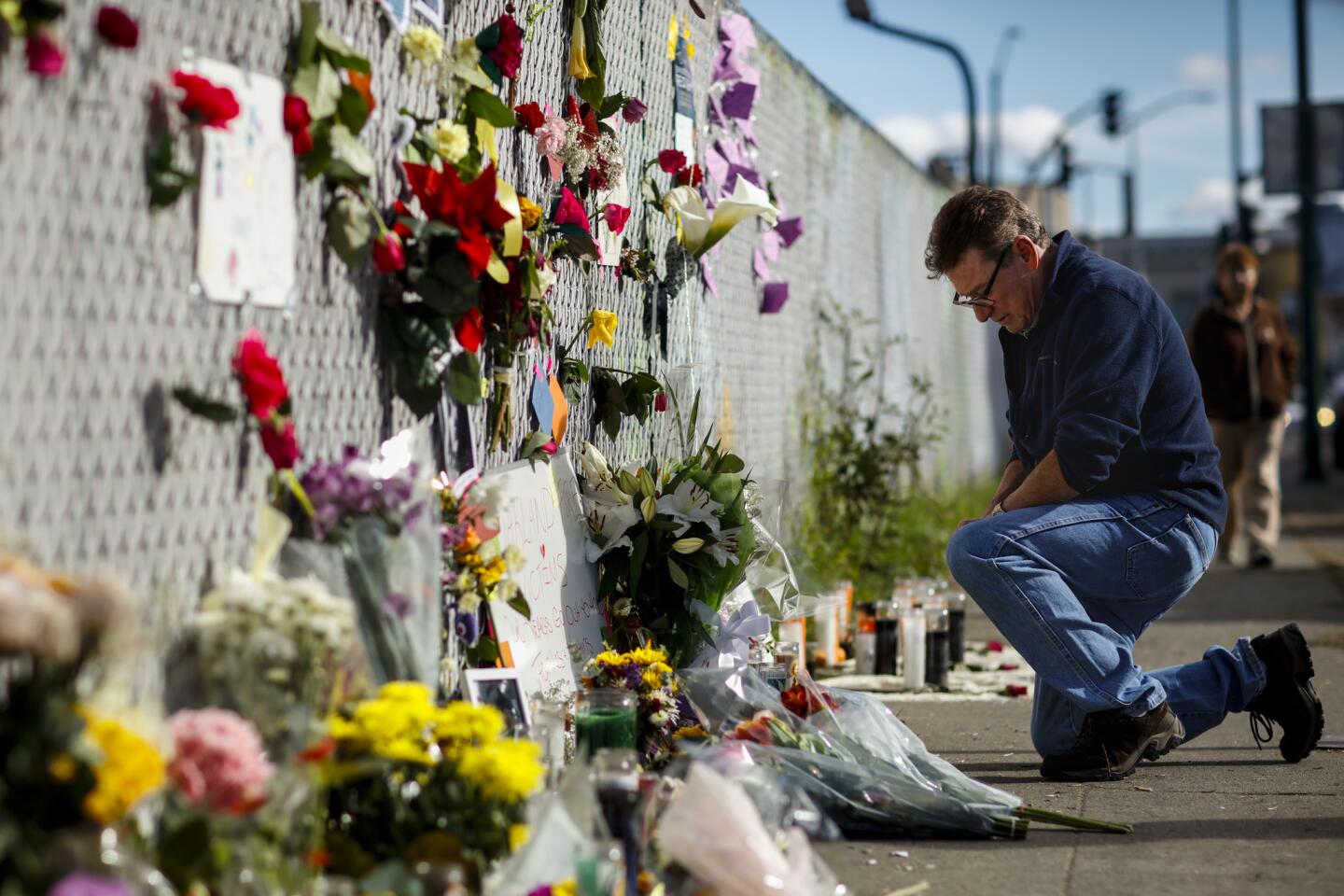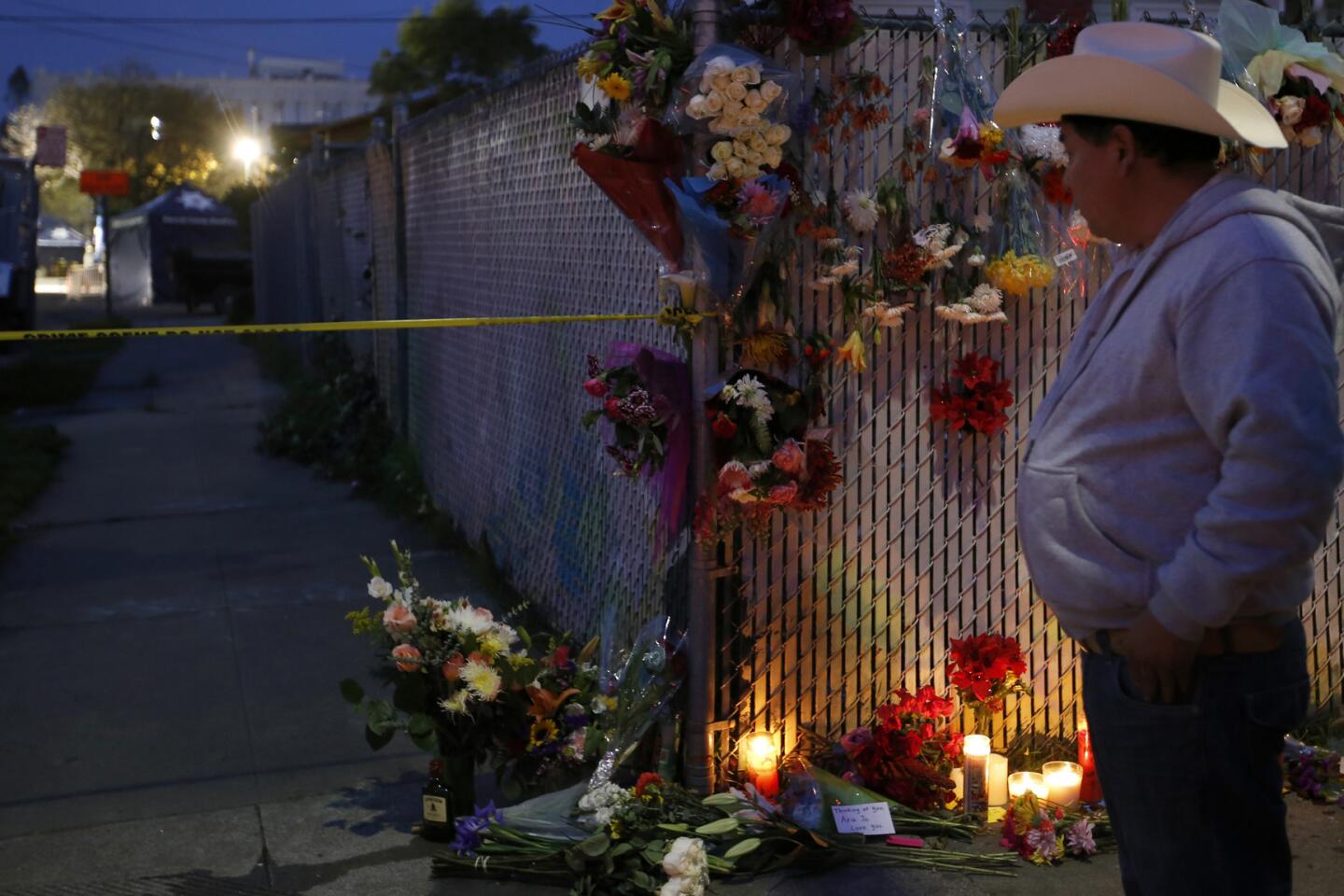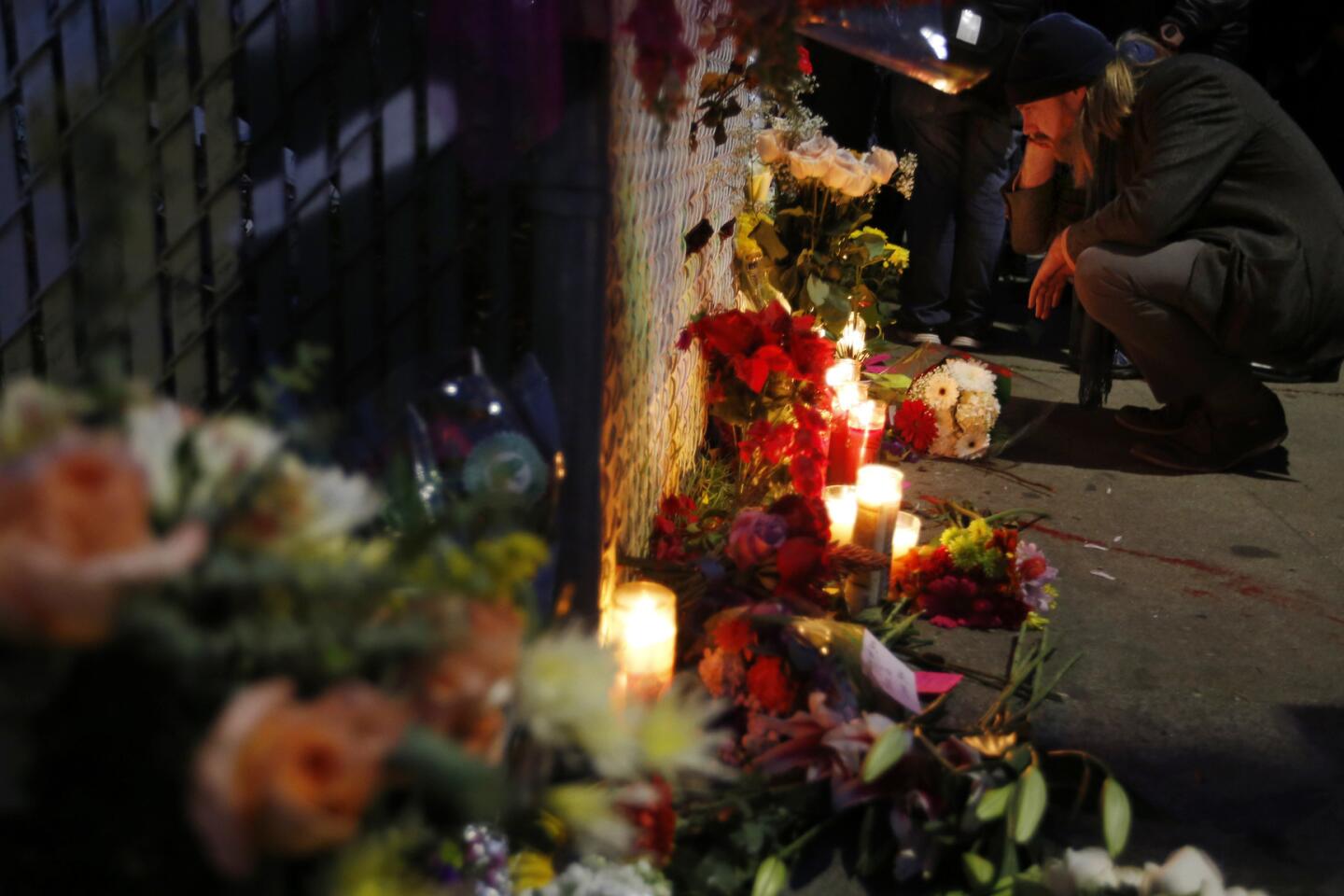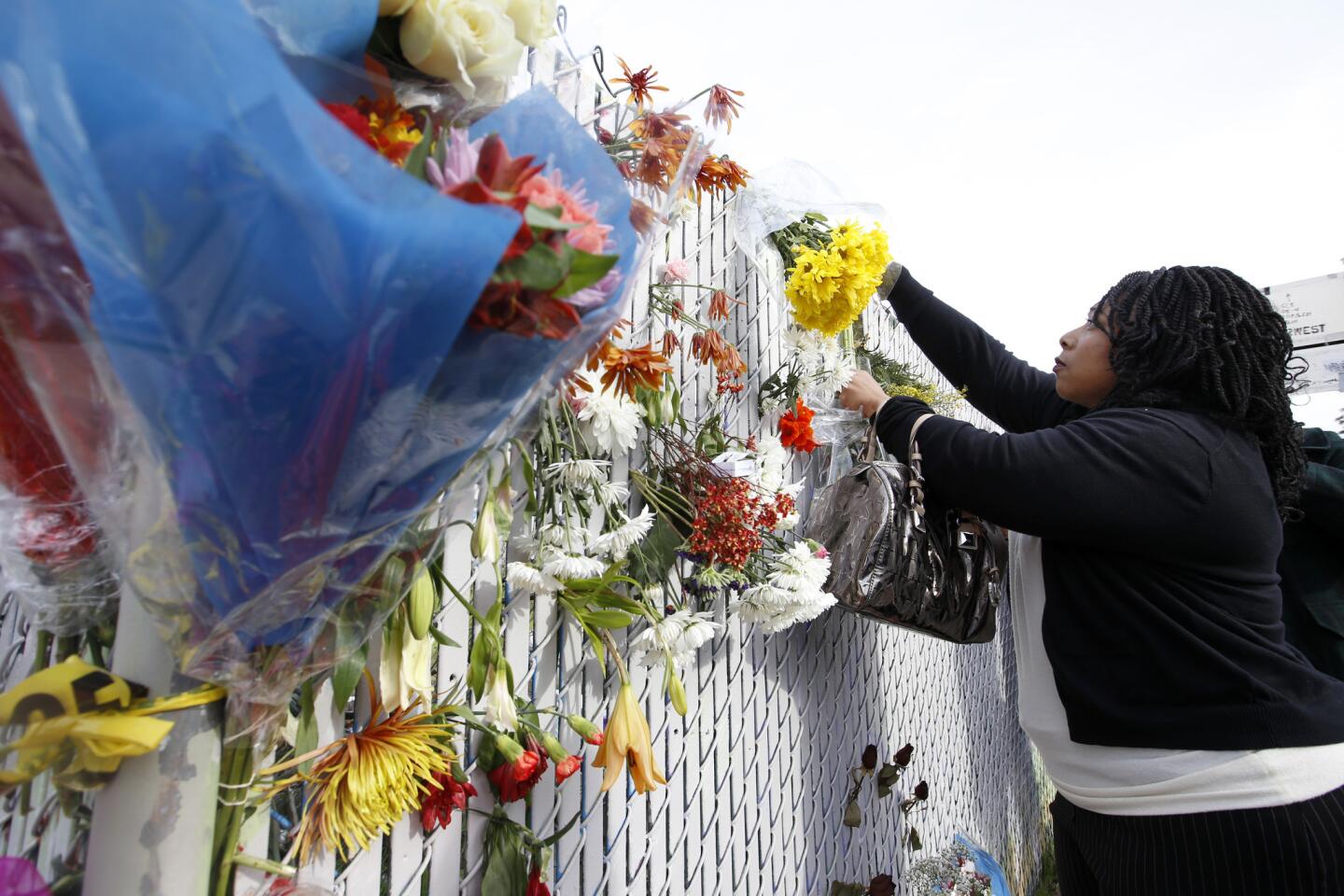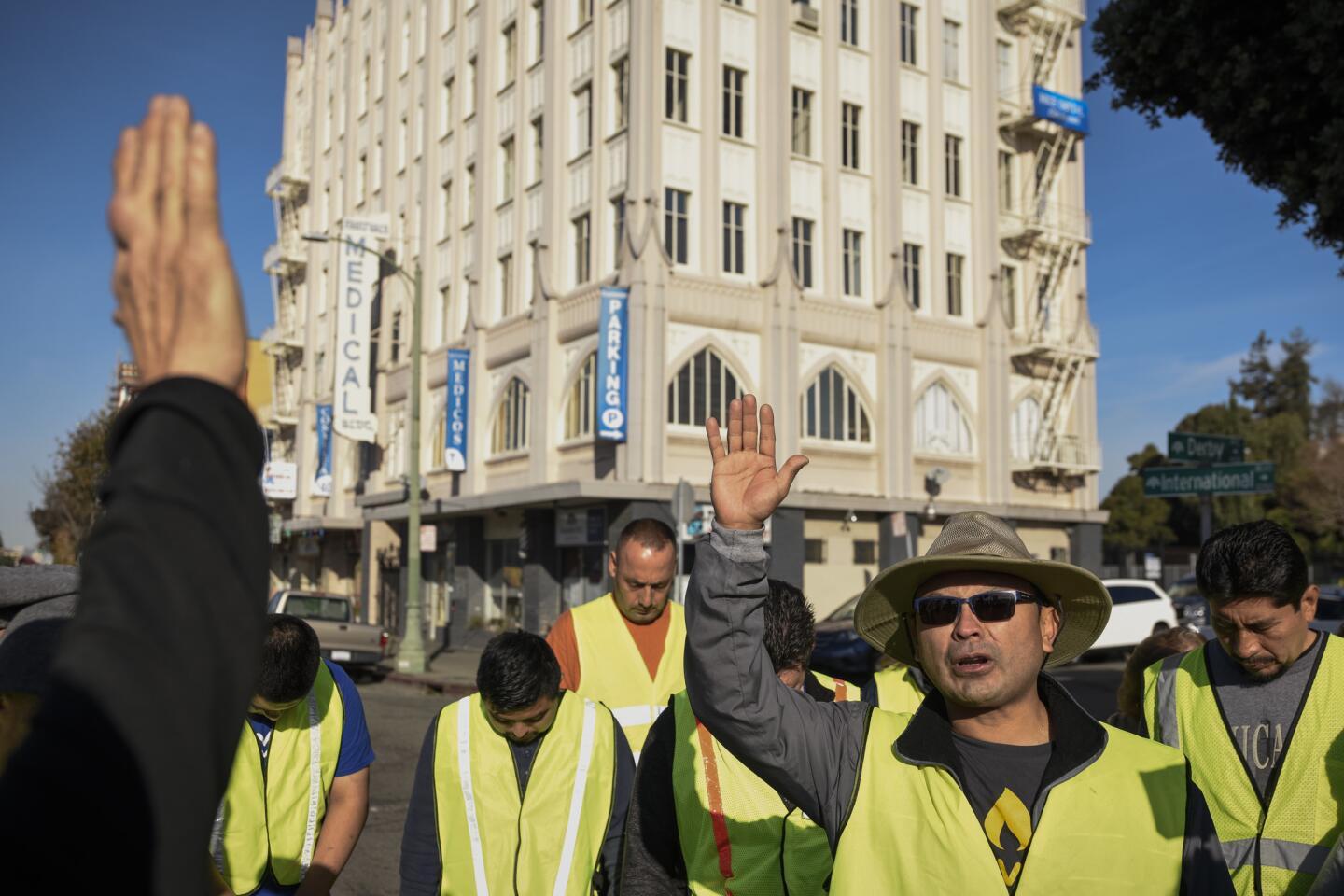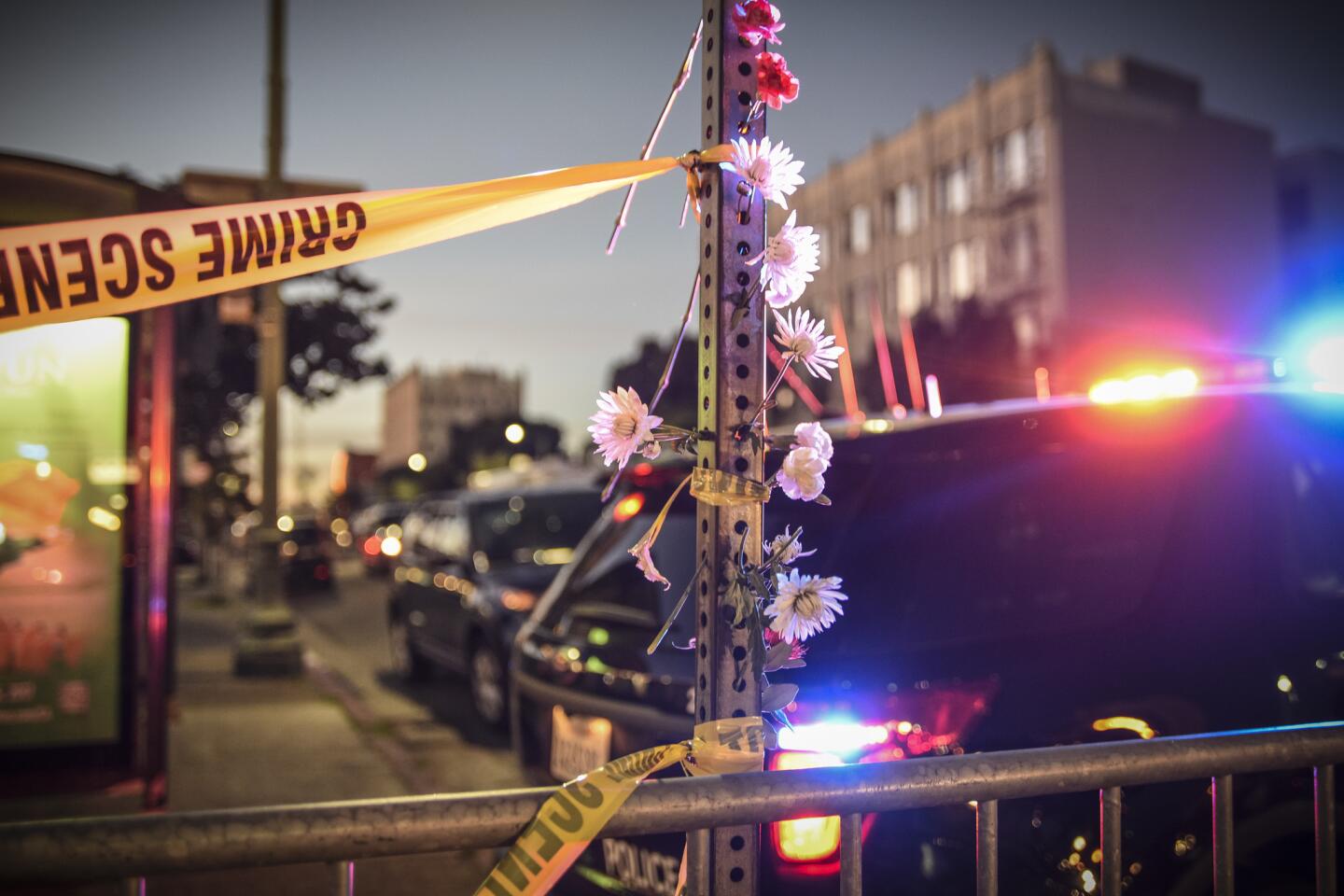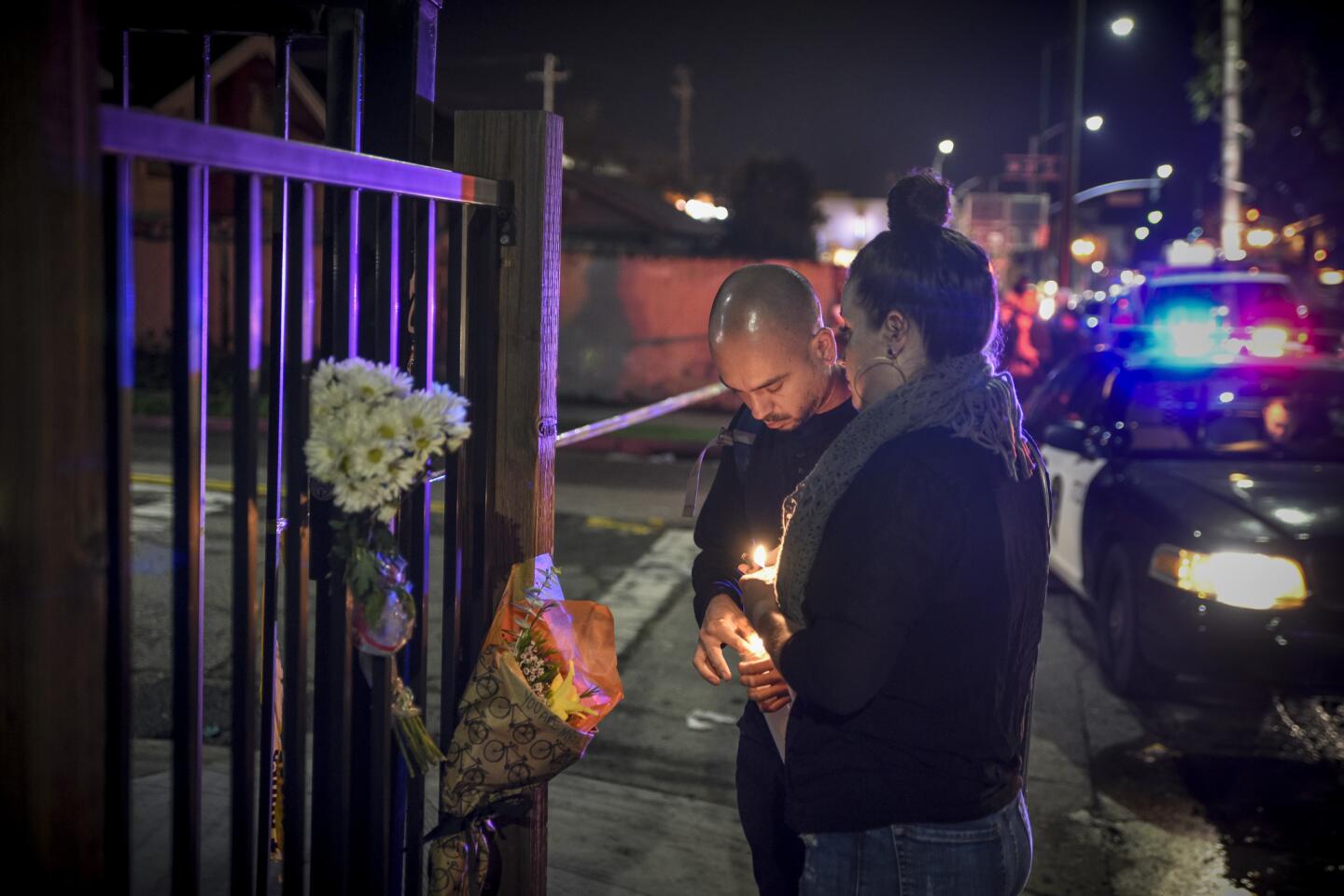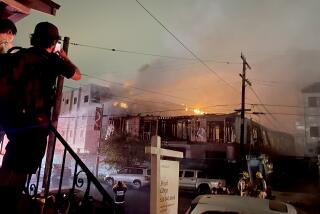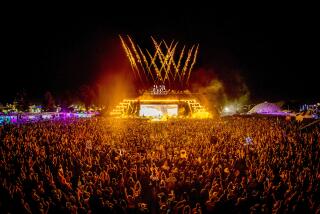Perspective: Oakland’s Ghost Ship fire is nightmare scenario for promoters, governments and music lovers

If the fire is determined to be an arson, prosecutors could bring murder or aggravated arson charges — with one count for each person killed.
The fire that ripped through an electronic music concert at an Oakland warehouse-turned-art space Friday night was a worst-case scenario for anyone who attends such events.
As of Sunday morning, 24 bodies were recovered, with more people unaccounted for. Officials fear the death toll could rise to 40. It might be one of the worst disasters in the history of live music in North America.
There are risks in throwing any kind of off-the-grid event, but it’s hard to imagine a more nightmarish confluence of structural failures. Early reports say that the warehouse building, known as the Ghost Ship, filled with art installations and ad-hoc construction, was unsuited for public events. Despite a lack of permits for residential occupancy, some familiar with the location described it as a live/work space with no working sprinklers or smoke detectors and a makeshift staircase to a second floor that trapped fans upstairs once the fire broke out.
The human toll in this tightknit world of artists, promoters and fans is staggering. As the owners of 100% Silk, the Los Angeles label whose artists headlined the event, said in a statement: “What happened in Oakland is an unbelievable tragedy, a nightmare scenario.“ Right now, that grief is paramount.
But as the fallout becomes clearer, it’s important to recognize that these kinds of parties, held in unpermitted or semi-legal art and industrial spaces, happen in Los Angeles and every major city in the country. Whatever later recriminations come regarding the particular safety hazards at this one venue, it’s now impossible for anyone who goes to these shows to think that it can’t happen anywhere, at any time.
This tragedy will have to be a moment of reckoning for the music community and local governments about the nature of these shows and how to deal with them from a public-safety standpoint.
This kind of terrifying event should make every promoter understand that it could have been them, their fans, their loved ones.
In Los Angeles, much of the decade-long conversation around fan safety at dance music events has focused on drug use, high temperatures and medical staffing at large-scale events (whose migration away from Los Angeles County has only transferred the problems of drug-related deaths to the exurban stretches of San Bernardino County). Now it will have to include structural safety at underground happenings with a much lower profile than the major summer festivals.
However, the Ghost Ship tragedy poses a tougher problem. The world of underground music is ephemeral. There is no one festival or promoter that cities can ban.
Unlike mega-raves such as Electric Daisy Carnival and Hard Summer (which are owned by Live Nation and attract tens of thousands of fans), smaller concerts in the underground club music scene, like the one consumed in the Oakland fire, rarely stay in one place for long. The artists and promoters often rotate between industrial venues and makeshift art and residential spaces that are rarely intended for live music.
Economics and gentrification also play a role. Formal clubs often close at 2 a.m. or earlier, and many underground promoters aren’t welcome or can’t afford to produce shows in Hollywood-style nightclubs, so they turn to an archipelago of unpermitted spaces. Addresses are frequently announced just hours before showtime through email or select groups of fans on social media. The challenging music and welcoming atmosphere often appeal to feminist, queer and outsider audiences, who cherish these shows as a place for self-expression free from the judgment and police scrutiny found at more mainstream concerts.
This makes the myriad, horrific failures at Ghost Ship all the more tragic.
To judge from early reports, the particulars of this space — piles of furniture blocking paths out, a labyrinth of hand-built studios and thwarted fire-safety inspections — appear to have compounded each other in a deadly confluence of mistakes, accidents and ignorance. For all the vitality and artistic necessity of underground dance music, this kind of terrifying event should make every promoter understand that it could have been them, their fans, their loved ones.
But as Oakland and the larger world try to figure out what to do to prevent tragedies like this, it’s also important to remember that had this happened at a venue with proper fire exits, safety equipment and inspections, we might only be reading about a scary incident at a nightclub instead of dead young music fans.
The risks of illegal warehouse shows are very different from those of a mega-rave, but the principle is the same. The music community should be held to the same standards of safety as anyone participating in public life and commerce. Promoters who turn to illicit venues to throw shows have to understand their role in how this tragedy happened.
But cities should also understand that making it more difficult to be responsible will never save one more life. Shunting artists and fans away from safe, regulated venues with easy access to services and inspections only makes things worse.
As of now, it looks like music fans died because that “nightmare scenario” happened in a place wholly unequipped to handle it. For many, the fantasy of underground club music as an escape from reality is now broken forever.
Any coming crackdown, however, will only move these shows to risky dark corners. Saving lives means bringing this scene back into the light as best we can, which includes making it easier for small promoters to be safe and permitted.
Everyone involved in this world — from the promoters booking sets to the fire departments and city governments charged with keeping young people safe — has to finally be candid about the risks inherent in this scene, and cannot let it happen again.
On Twitter: @AugustBrown
ALSO
Oakland concert struck by deadly fire was promoted by L.A. dance label 100% Silk
Officials fear up to 40 dead in fire during concert at Oakland warehouse
Raves leave L.A. for the suburbs, but deaths and drug problems continue
UPDATES:
11:11 a.m.: This article was updated to reflect that 100% Silk has clarified that it did not promote the event in an official capacity.
More to Read
The biggest entertainment stories
Get our big stories about Hollywood, film, television, music, arts, culture and more right in your inbox as soon as they publish.
You may occasionally receive promotional content from the Los Angeles Times.
